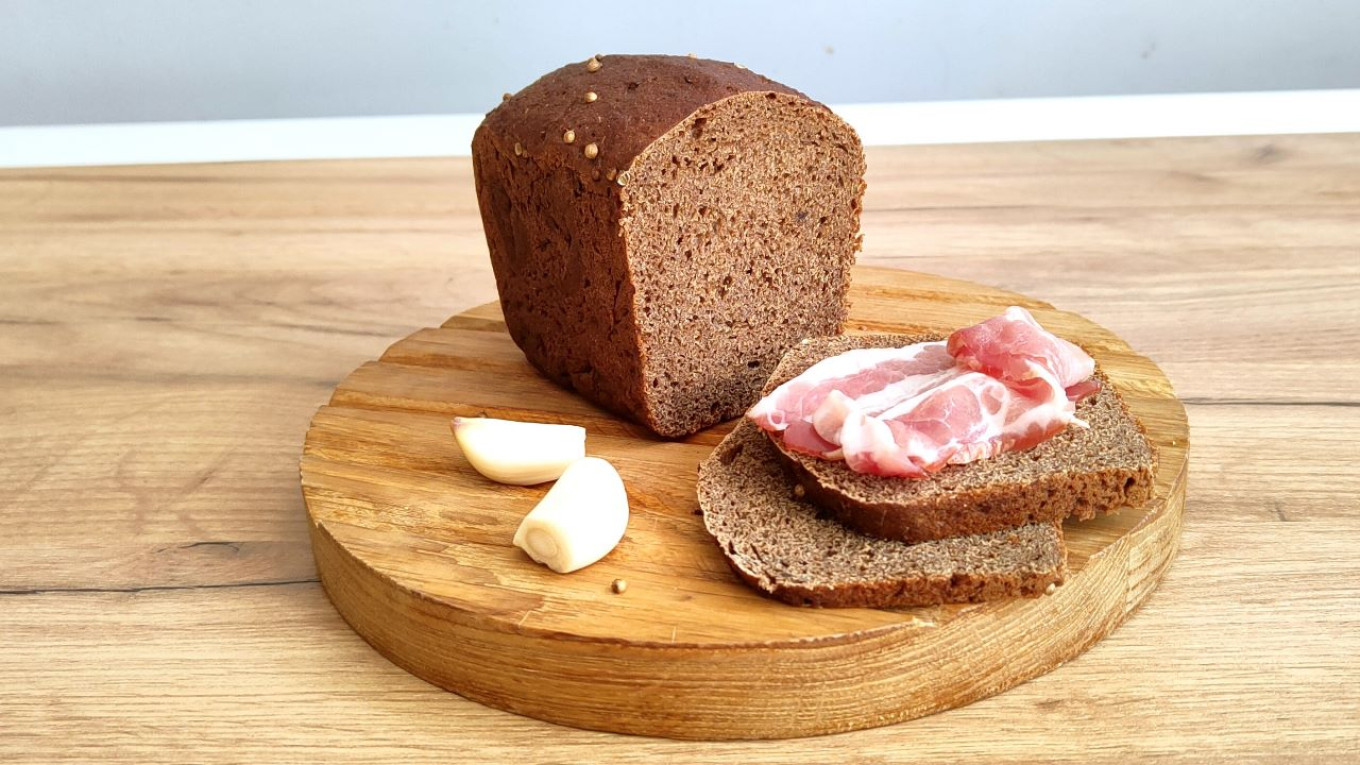Borodinsky has been one of the most popular types of bread in Russia for many decades. When foreigners visit they are given a taste of Borodinsky to show them what Russian cuisine is all about. And when Russians go abroad they bring loaves for their friends who long for the flavors they left behind in their homeland. This is all fine, but there’s one little problem: the history of this bread is full of mysteries.
There are many legends about the origin of Borodinsky bread. If we immediately ignore the obvious fictions — that it was named after the composer Alexander Borodin, for example — then we are left with the most common version: the story of the abbess of the Spaso-Borodinsky Monastery, Margarita Tuchkova.
She was the wife of Alexander Tuchkov, a Russian general who was killed near Moscow in the Battle of Borodino with Napoleon's troops in 1812. After her husband's death, Margarita Tuchkova (née Naryshkina) took monastic vows and founded this women’s monastery.
During the reign of Emperor Alexander I and with his generous help, the widow of Major-General Tuchkov erected a stone church in the name of Christ the Savior on Borodino Field. Together with several women — her sisters in misfortune — she settled there. She made this monastery a refuge for "unfortunate women burdened by the sorrows of life.” With the permission of the Holy Synod (the supreme organ of church and state administration of the Russian Church) on March 4, 1833 Tuchkova established the Spaso-Borodino cloister for 20 women.

On December 6, 1836 Margarita Tuchkova petitioned Emperor Nicholas I to turn the Spaso-Borodino cloister into a convent. She also asked to "use her pension of 1800 rubles a year for the benefit of the monastery in perpetuity."
The Holy Synod, to which this appeal was forwarded, agreed to the transformation of the cloister into a monastery. There they allegedly started baking Borodinsky bread. However, until the 1920s, the word "Borodinsky" with regard to bread does not appear in any sources

We find one of the first mentions of Borodino bread in the classic work on baking by the famous scientist and technologist Boris Sarychev in 1929. Ten years later the book "Selling Food Products" included a tested recipe for a bread that used rye flour "with sourdough and malt" and anise or cumin. It would seem that an industrial recipe had been developed shortly before that, most likely in 1933-1935 at enterprises which were part of the Moscow Bread Trust.
This is probably how "Borodinsky bread" appeared. In the Spaso-Borodinsky monastery they baked good sourdough bread, which people in Moscow knew about. There is nothing surprising in this: bread was often baked in monasteries.
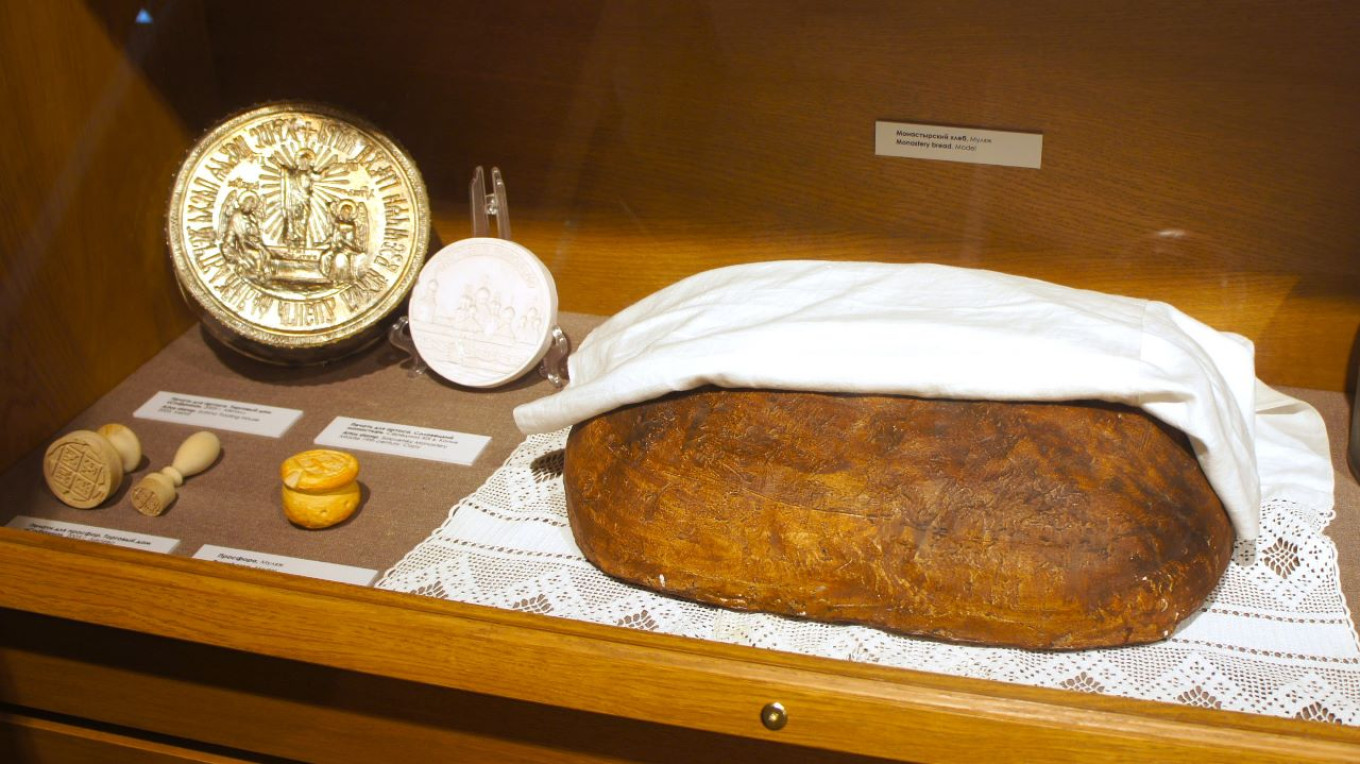
But at the end of the 1920s there was a movement to give new names to old dishes. There is every reason to believe that bread baked by nuns and monks was a "victim" of this process. It clearly wasn’t a good idea in those years to call it “Monastery bread,” but it was another matter to call it "Borodinsky" and associate it with patriotic history.
The recipe for Borodinsky bread did not appear in the 1930s out of nowhere. During this period there were plenty of pre-revolutionary bread makers still at work, and recipes for malt rye breads had made their way into Russia from Belarus and the Baltic States, where they have been very popular for centuries. It seems that the coriander in Borodino bread only appeared later in the Soviet period. Before that anise and caraway were used. This all points to the Baltic origins of this bread in Russia. In Riga bread, which was equally popular, the main flavor was caraway.
In the 19th century, bread was not baked in a tin, but in oblong or round loaves baked right on the floor of the oven. It was probably quite dense. An important ingredient back then was red (fermented rye) malt. Naturally, there was no baking yeast. This type of bread was baked from so-called sour dough, that is, dough left over from the previous batch. Boiling water was poured on rye flour — to scald it — and molasses or liquid honey was added. This ensured that the bread would not go stale quickly.
In the 1930s, old recipes were adapted for industrial use, modified to meet the needs of mass production and available ingredients. Baking bread was done in factories and almost no one made bread at home anymore. Before the war women still baked bread on collective farms, where peasants were given flour as payment for their labor. However, since the late 1950s home-baked bread has become exotic.
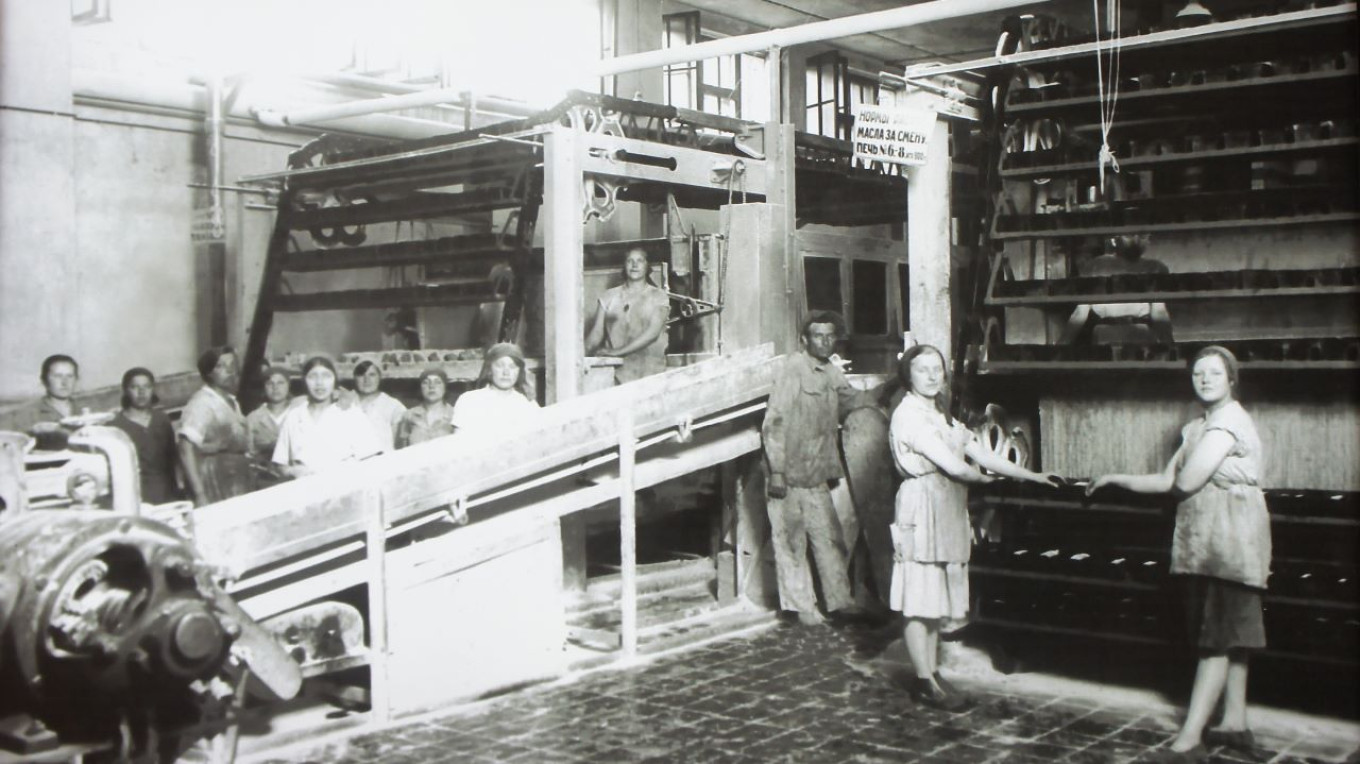
In the Soviet period there were several dozens of varieties of bread produced and sold in state shops (a pamphlet from 1940 lists 350 varieties of baked goods). The most popular were Stolichny, Darnitsky, rye, and sliced loaf... Borodinsky was not produced throughout the Soviet Union, but only in large cities — and not all of them. It was very popular in some cities — after all, what could be better than a slice of Borodinsky bread with salo (cured pork) or herring and onion?
Alas, the recipe for black bread from the Spaso-Borodinsky monastery has not survived, but the beautiful legend, it seems, will live on forever.
Borodinsky is also used as an ingredient in some dishes, including klops. This might not be a Russian dish, but a recipe for klops was already included in the famous 1795 “Russian Cookery” book — and that’s the “first time” only because it was essentially the first cookbook published in our country. Later similar recipes can be found in other cookbooks.
There is one theory that the name of the dish comes from the Old Swedish kollops or English collop (a slice of meat, escalope). The author of "Russian Cookery" Vasily Lyovshin wrote in his recipe: "cut the thinnest slices of meat from the beef with a knife.”
There are many recipes, but we have chosen one from Yekaterina Avdeyeva’s "Handbook for the Experienced Housewife” (1846). By the way, Ekaterina Avdeyeva was the first woman author of a cookbook in Russia. Her recipe just mentions rye bread.
This recipe is not at all complicated, but the meat has a marvelous rye flavor. When you take it off the stove, you’ll think you are sitting by a Russian stove — and your guests will love it.
Sirloin is the best cut of meat to use. Ideally, use real Borodinsky bread. You can also use a different bread, but it must be rye, and you must add spices for flavor.
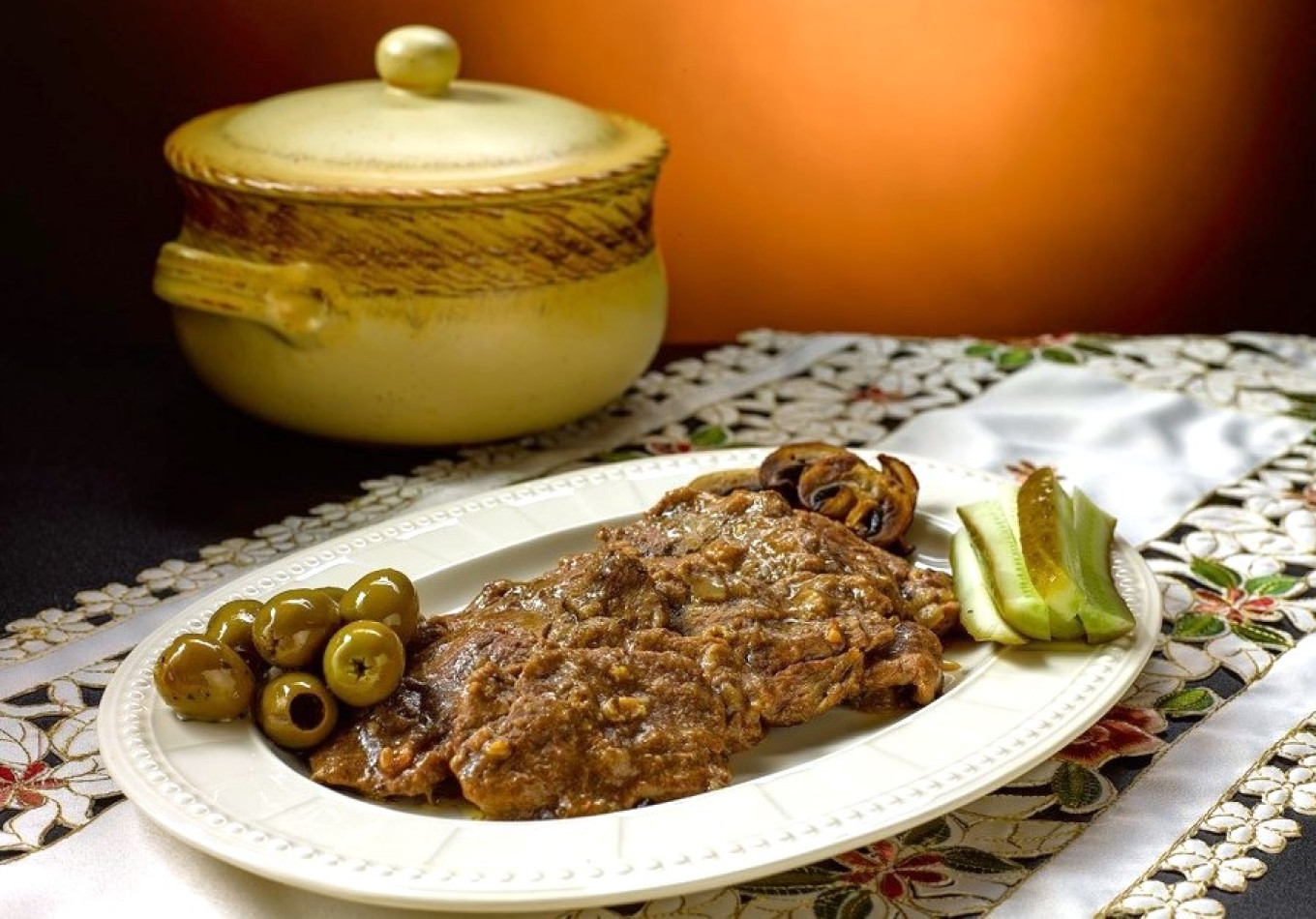
Borodinsky Steak
Ingredients
- 600-800 g (1.4-1.8 lb) beef, preferably sirloin
- 200 g (scant ½ lb) onions
- 200 g rye bread
- 50 g (3.5 oz) clarified butter or regular butter
- 200 ml (1/2 pint) meat broth
- 1/3 tsp cumin
- 1/3 tsp coriander
- 6 black pepper corns
- 2 bay leaves
- Salt, ground pepper to taste
Instructions
- Cut the beef into 1-cm-thick slices.
- Pound with a kitchen mallet or the back of a knife, being careful not to tear the meat.
- Dice the onion.
- Grind the bread into breadcrumbs in a blender or food processor.
- Lightly crush the spices with the back of a knife.
- Salt and pepper the flattened beef slices.
- Met the clarified or regular butter in a saucepan with a thick bottom over low heat.
- Layer the meat, onions and breadcrumbs, sprinkling each layer with the spices, and add the bay leaves.
- Pour in the broth and put the remaining butter on top.
- Bring to a boil, turn down the heat, cover and cook over low heat for 1 hour until the meat is tender.
- Serve boiled potatoes fried in butter, pickles and marinaded vegetables as garnishes.
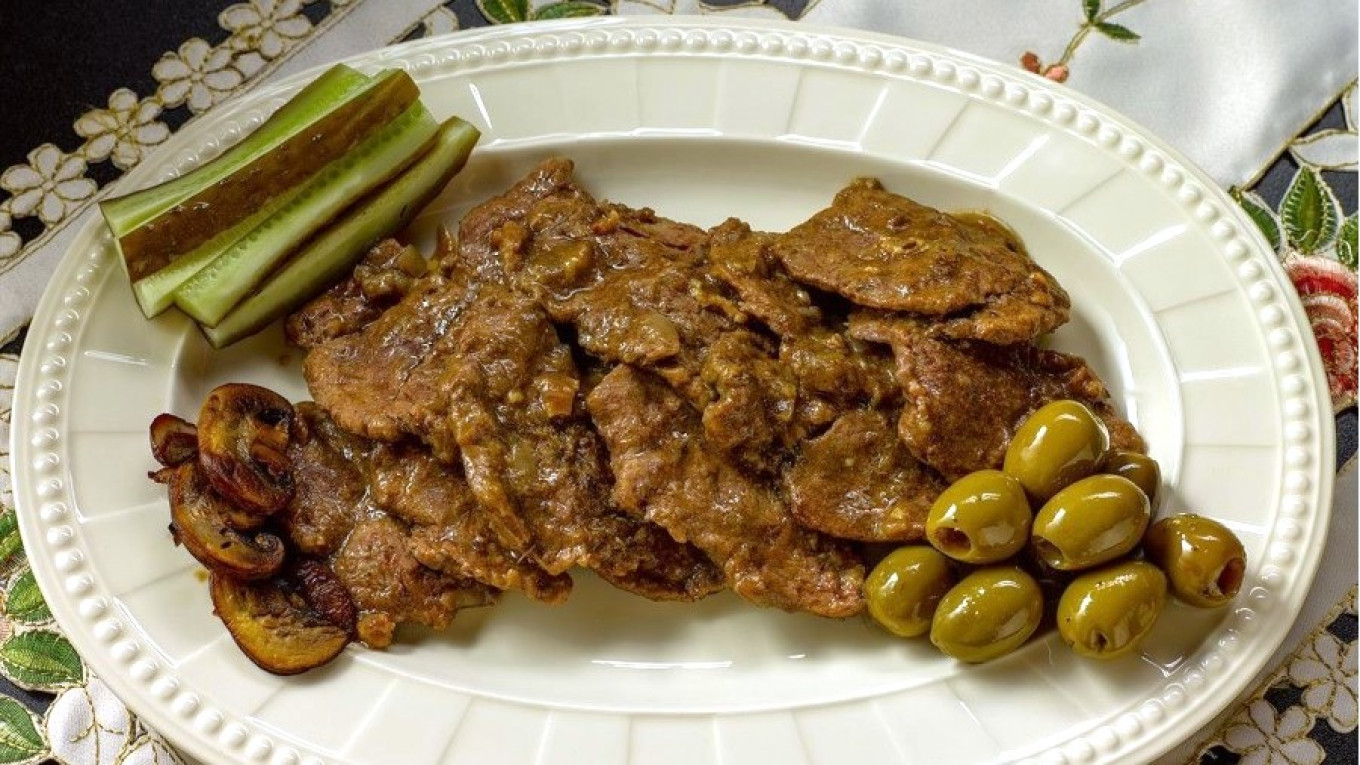
A Message from The Moscow Times:
Dear readers,
We are facing unprecedented challenges. Russia's Prosecutor General's Office has designated The Moscow Times as an "undesirable" organization, criminalizing our work and putting our staff at risk of prosecution. This follows our earlier unjust labeling as a "foreign agent."
These actions are direct attempts to silence independent journalism in Russia. The authorities claim our work "discredits the decisions of the Russian leadership." We see things differently: we strive to provide accurate, unbiased reporting on Russia.
We, the journalists of The Moscow Times, refuse to be silenced. But to continue our work, we need your help.
Your support, no matter how small, makes a world of difference. If you can, please support us monthly starting from just $2. It's quick to set up, and every contribution makes a significant impact.
By supporting The Moscow Times, you're defending open, independent journalism in the face of repression. Thank you for standing with us.
Remind me later.



